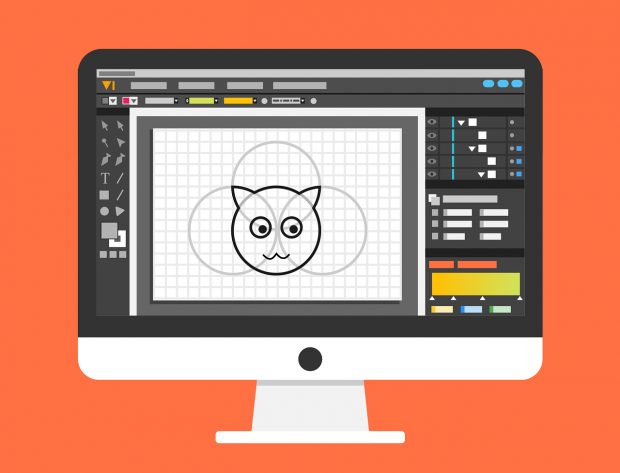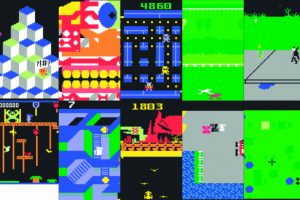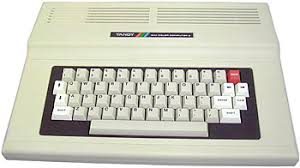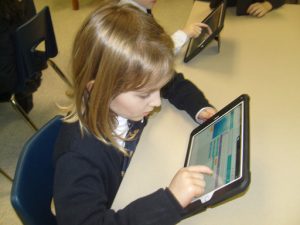In high school, I remembered that one of my favorite programs was Microsoft Paint. I used MS Paint to create informative posters for my projects. Given my limited fine motor skills, drawing and writing was difficult for me. It was easier to type and to manipulate pre-defined shapes and colors. Paint was a suitable alternative since it allowed me to be more efficient when creating a visual representation. I also enjoyed using MS Paint because I was able to zoom in to make bit-sized modifications.
Microsoft paint was free software that pre-installed with other Microsoft applications. It is essentially a giant piece of white paper with different tools to create a visual representation. Users can create defined shapes of any sizes, fill in spaces with different colors, make copies of the current visual and select and move any part of their creation. It also allows the freedom to integrate pictures and text. According to the SAMR model, MS Paint would resemble a textbook case of substitution (i.e. for art paper).
However, is there more to Paint than a simple application that helps users fill in a blank space with color and shapes?
Specifically, Microsoft Paint influences the technological landscape by introducing new cultures such as ubiquitous use of technological tools and new typographic freedom. First, ‘undo’ and ‘redo’ options is a powerful feature that helps demonstrate the flexibility and the ubiquitous use of technological tools. MS Paint represents new ways of organising and understanding information. Users have more autonomy and independence to make and unmake decisions. They can benefit from making a choice and immediately receiving the corresponding results. This strongly influences the length of one’s attention span and their tolerance for delayed gratification.
Bolter (2001) would agree that the features of Paint allow for typographic freedom. Hence, the visual and verbal ratio is now a customisable variable. Users decide how words and pictures are positioned in relationship to each other. Moreover, Microsoft Paint may very well be the catalyst for the ‘Rip. Remix. Feed’ culture. MS Paint makes it easy for users to ‘remix’ previous work – i.e. alter and modify existing creations. For example, users can easily import pictures and or use stock pictures to layer words, add comments or alter visuals.
In the 21st century, immersive technology provides users with expanded creative spaces. Consider Kipmen’s (2006) talk about Microsoft Holographic Lens, users can experience their artistic creation. Kipmen argues that holograms and immersive experience allow users to easily gain a new perspectives about their creation. Users can also interact with different elements in their creative piece. This has realistic applications. For example, engineers can improve their models by turning their creations in different directions. Scientists can use the virtual space to explore new terrain. Ultimately, this visual experience allows users to think outside of the box. Now, this use of this New Media would represent the ‘Redefinition’ part of the SAMR model.
Given this review, how has Microsoft Paint influence your digital journey? How are your memories of Microsoft Paint? How does Microsoft Paint influence the communicative landscape?
References
Bolter, J.D. (2001). Writing Space: Computers, hypertext, and the remediation of print. Mahway, NJ: Lawrence Erlbaum Associates, pp. 3246, 7798.
Kipmen, A. (2016). A futuristic vision of the age of holograms. Retrieved from https://www.ted.com/talks/alex_kipman_the_dawn_of_the_age_of_holograms/transcript






